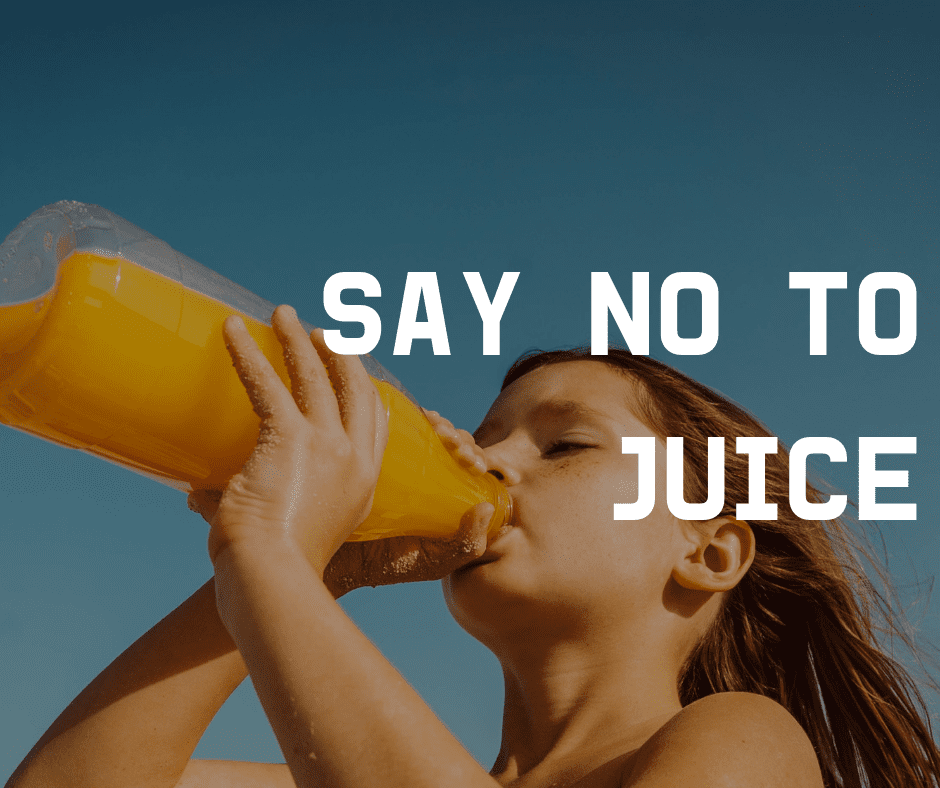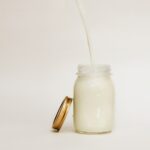

Just Say No to Juice. Common Juice Ingredients: Lead, Mercury, and Arsenic.


March is National Nutrition Month! The Academy of Nutrition and Dietetics created this campaign to bring awareness and education to nutrition. This campaign promotes educating ourselves about food and nutrition, as well as incorporating physical movement daily. We can then be equipped to make better food choices for ourselves and our families, allowing us to be our best selves.
This year, the theme of National Nutrition Month is to “Go Further with Food.” Food gives us fuel for our bodies and the sustained energy we need to make it through the day. It is no wonder why we should be eating more nutrient-dense real foods. This is even more critical for our growing children. They need the proper foods to build the bodies they’ll grow into.
In celebration of National Nutrition Month, let’s talk fruit juice.
There’s no question about it. Everyone loves juice. I’ve yet to meet a child that does not like juice. For parents, it’s also an easy, convenient way to have our kids get their fruits and vegetables. Right?
Well, let me ask you this. Would you allow your child to have 6 medium-sized oranges in one sitting? How about 9 apples in one sitting? Even if you did allow for it, could your child physically consume that many in one sitting? Well, that’s the amount of fruit they are drinking whenever they consume a cup of orange juice or apple juice, respectively.
Well, More Fruit = More Nutrients, right?
Consumer Report just found lead, mercury and arsenic in many of the most common fruit juice brands. You can read more here. If you think higher end brands will be safer, sorry to burst your bubble. Whole Foods, 365 brand, made it on the “bad list.”
When we drink juice, we remove all the protective fibers that slow down and even block some of the sugar being absorbed in the body. Additionally, much of the processing, strips away the fruits’ nutrients. Nutrients are then fortified or added back in to the juice. What we are left with, is a drink that has a very small semblance to the fruit it came from.
Okay so we have metals, toxins and chemically processed nutrients in our juices.
Now Let’s Talk Sugar.
All carbohydrates are broken down to become sugars in our bodies (some chains just take longer to break down). You can read more about it here. Our blood is only equipped to handle about 4 grams of sugar (or 1 teaspoon), at any given time. The rest gets quickly shuttled to either be stored in cells as reserve energy but most of it gets stored as fat.
Table sugar (sucrose) is made of two molecules, glucose and fructose. Glucose can be used by our entire body. Excess glucose is stored in the liver, muscle and then fat. But fructose is only absorbed by the liver and our liver is only about 5 lbs. When most of our processed foods have fructose or high fructose corn syrup (HFCS), which is in about 90% of all processed foods, we are then overloading our liver. The excess fructose becomes fat in the liver, stays there and damages the liver.
Fructose is also the main carbohydrate in fruits.
Yes. Fruits.
That’s why it can be dangerous to consume a lot of fruit, especially if we’re eating a lot of foods that contain sugar, high fructose corn syrup (HFCS) and fructose.
This is how we can get non-alcoholic fatty liver.
This is how kids can get fatty liver at such a young age. Glucose can at least be used by the entire body and detected by blood work. But fructose? Not so much.


If you reference the graphic, all carbohydrate grams are depicted based on packaging sizes. While the Honest Juice box seems like a better option at 9 grams of sugar, it’s still over 2 times the amount of sugar your body can handle at any given time. Let’s not even go there with apple juice.
The pouches don’t seem too bad in sugar but notice they are half the size portions of the juice boxes. Many of our kids consume more than one pouch or box each day, sometimes in the same sitting.
While we’re on fruit, you know those small Sun-Maid raisin boxes? They have about 31 grams of sugar. Yes, the small box we usually give our children as a healthy snack. Almost 8 TIMES the amount of sugar their body can handle. Almost the same amount of sugar as a can of coke.
Now, imagine what it’s doing to their liver…
Don’t fear fat. Fats have twice as much energy than sugar. Our children’s brains use about double the amount of energy every day compared to an adult’s brain. This is especially true until age 4. By having our kids rely on their body’s stored energy (fat), this allows for more clean burning, long lasting energy. Think of it as fewer mood swings and irritability.
Tip: Try to stay away from sugar-free foods because it stimulates the sweet craving. They’re about 200-500 times sweeter than table sugar. Additionally, artificial sweeteners can still raise insulin, cause leaky gut and mental disorders.
Give your child (and yourself) a piece of fruit instead; but not too much. We can get the same nutrients found in fruits, from other real foods that don’t contain as much sugar. Moderation is key here.
In celebration of National Nutrition Month, let’s try to minimize the juice and pouches. Not only did we recently find out there’s lead and arsenic in them, they’re sugar bombs, causing us to become insulin resistant and sick at a very young age.



